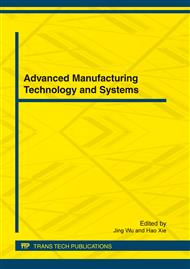p.277
p.282
p.287
p.292
p.297
p.302
p.306
p.311
p.317
Study on CMP Test Technology of 65 nm and below Node Wafers with Copper Interconnects
Abstract:
It is of significance to research high-removal efficiency and low-cost CMP process for the 65 nm and below node. Chemical mechanical polishing (CMP) can realize the planarization of the wafer with free defects, free contamination and below nanometer level roughness. Test project of CMP slurry is main contain of these detections such as pH value, chelating agent content, SiO2 gel particle size, ζ-potential detection and the observation by Transmission electron microscopy (TEM). End point detection method of pattern wafer CMP usually includes the non destructive optical measurement, motor current feedback measurement and polishing pad temperature test. The main problems of the measurement for pattern wafer CMP are critical dimension (CD), section, film thickness, defects and particles measurement. Some of the new type of testing technology, such as atomic force profiler (AFP), can be used to compare CMP effect, such as dishing, erosion, tungsten plugs, the height of steps and flatness of the wafer, which is significant for wafer CMP research.
Info:
Periodical:
Pages:
297-301
Citation:
Online since:
March 2012
Authors:
Keywords:
Price:
Сopyright:
© 2012 Trans Tech Publications Ltd. All Rights Reserved
Share:
Citation:


